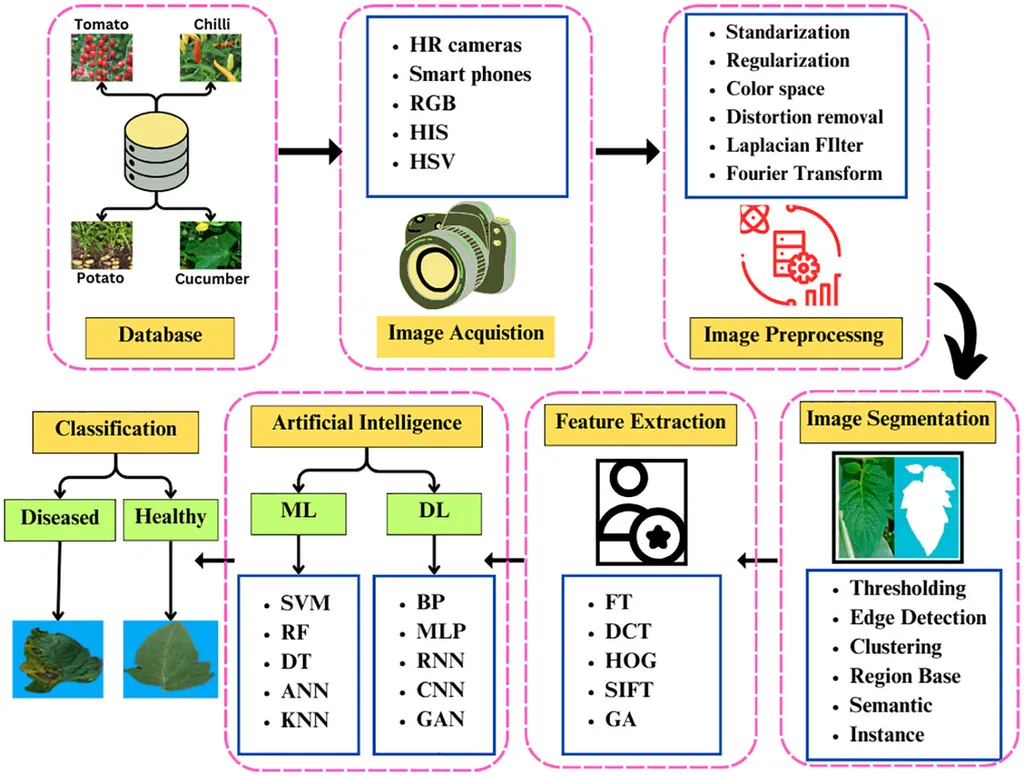In the heart of China’s Hunan Province, a technological breakthrough is unfolding, promising to reshape how we monitor and manage non-food crops. A team led by Xiongwei Guan from the School of Information Engineering at China University of Geosciences (Beijing) has developed a novel model that could revolutionize large-scale crop classification, with significant implications for the energy sector.
The challenge of distinguishing non-food crops like oilseed rape, tea, and cotton from food crops has long perplexed agronomists and policymakers. These crops often exhibit similar canopy reflectance spectra, making accurate identification a complex task. However, Guan and his team have tackled this issue head-on with their Phenology-Aware Vision Transformer Model (PVM). This innovative approach combines multi-source remote sensing data with crop-growth calendars to deliver unprecedented accuracy in crop classification.
At the core of the PVM is the Phenology-Aware Module (PAM), which dynamically adjusts temporal attention using encoded phenological cues. This allows the model to focus on key growth stages, significantly enhancing its classification capabilities. “By incorporating phenological knowledge, we enable the network to better understand and interpret the temporal dynamics of crop growth,” explains Guan. This insight is crucial for distinguishing between different types of non-food crops, which often have unique growth patterns.
The model also features a Multi-Task Attention Fusion (MTAF) mechanism that adaptively combines Sentinel-1 SAR and Sentinel-2 optical imagery. This fusion process exploits the complementarity of different sensor data, mitigating cloud-induced gaps and providing a more comprehensive view of the croplands. “The MTAF mechanism ensures that we leverage the strengths of each data source, resulting in a more robust and accurate classification,” says Guan.
The results speak for themselves. On the Hunan dataset, the PVM achieved an F1-score of 74.84% and an IoU of 61.38%, outperforming existing baselines. Cross-regional validation on the Canadian Cropland Dataset further confirmed the model’s generalizability, with an F1-score of 71.93% and an IoU of 55.94%. These impressive metrics highlight the model’s potential for large-scale, accurate non-food crop classification.
The implications for the energy sector are substantial. Accurate identification of non-food crops is essential for food security, sustainable farming, and efficient resource allocation. By clarifying land-use dynamics, the PVM can guide policymakers and farmers in making informed decisions that balance food and non-food cropping. This balance is a prerequisite for ecological sustainability and a healthy agricultural economy, which in turn supports the energy sector’s reliance on biofuels and other agricultural byproducts.
The research, published in the journal ‘Remote Sensing’ (translated from Chinese as ‘遥感’), represents a significant step forward in the field of remote sensing and crop classification. As Guan notes, “Our model effectively integrates phenological knowledge with multi-source imagery, delivering accurate and scalable non-food crop classification.” This integration opens up new possibilities for monitoring and managing agricultural lands, with far-reaching benefits for the energy sector and beyond.
Looking ahead, the success of the PVM model paves the way for further advancements in semantic segmentation and time-series analysis. Future developments could see even more sophisticated models that incorporate additional data sources and environmental factors, further enhancing the accuracy and reliability of crop classification. As the world grapples with the challenges of climate change and food security, innovations like the PVM offer a beacon of hope, demonstrating the power of technology to drive sustainable and efficient agricultural practices.

